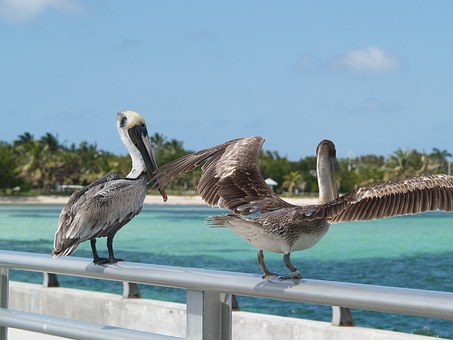Last week FUN Motorcycle Training “LLC” gave you some fun facts about the Florida Keys. This week we would like to share with you the story of the Seven Mile Bridge. There is nothing like going across this bridge on a motorcycle. This is a must.
The Seven Mile Bridge is a famous bridge in the Florida Keys, in Monroe County, Florida, United States. It connects Knight’s Key (part of the city of Marathon, Florida) in the Middle Keys to Little Duck Key in the Lower Keys. Among the longest bridges in existence when it was built, it is one of the bridges on Overseas Highway in the Keys, part of the 2,369 mile long US 1.
There are two bridges in this location. The modern bridge is open to vehicular traffic, whereas the older bridge is only open to pedestrians and cyclists. The older bridge, originally known as the Knights Key-Pigeon Key-Moser Channel-Pacet Channel Bridge, was constructed from 1909 to 1912 under the direction of Henry Flagler and Clarence S. Coe as part of the Florida East Coast Railway’s Key West Extension, also known as the Overseas Railroad.
After the railroad was damaged by the Labor Day Hurricane of 1935, the line was sold to the United States government, which refurbished Seven Mile Bridge for automobile use. Unsupported sections were added in 1935 to widen it for vehicular traffic. Dismantled trackage was recycled, painted white, and used as guardrails. It had a swing span to allow passage of boats in the Moser Channel of the Intracoastal Waterway, near where the bridge crosses Pigeon Key, a small island that held a work camp for Flagler’s railroad. Hurricane Donna in 1960 caused further damage.
The original railroad tracks were reused as guardrails when the bridge was converted for vehicular traffic.
The current road bridge was constructed from 1978 to 1982.
The vast majority of the original bridge still exists, although the swing span has been removed. The 2.2-mile section to Pigeon Key, used as a fishing pier and long open to motorized vehicles to give access to the key, was closed to motorized traffic in 2008 after the unsupported sections began to sag. As of 2015, the section remains open to pedestrians and bicyclists.[2][3] In 2014, Florida Department of Transportation approved a $77 million plan to restore the old bridge.
The new bridge is a box-girder structure built from precast, prestressed concrete sections, comprising 440 spans. Near the center, the bridge rises in an arc to provide 65-foot (20 m)-high clearance for boat passage. The remainder of the bridge is considerably closer to the water surface. The new bridge does not cross Pigeon Key.
The total length of the new bridge is actually 35,862 ft (10,931 m) or 6.79 miles (10.93 km), and is shorter than the original. Each April the bridge is closed for approximately 2.5 hours on a Saturday and a “fun run,” known as the Seven Mile Bridge Run, of 1,500 runners is held commemorating the Florida Keys bridge rebuilding project. The event began in 1982 to commemorate the completion of a federally funded bridge building program that replaced spans that oil tycoon Henry Flagler constructed in the early 1900s to serve as a foundation for his Overseas Railroad.
The Seven Mile Bridge was engineered by Figg & Muller Engineers. The structure was completed six months ahead of schedule and has earned eight awards, including an Exceptional Award for Cost Savings Innovation from the Federal Highway Administration.
FUN Motorcycle Training “LLC” hopes you enjoyed this history lesson on the seven mile bridge! Ride Safe!

